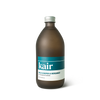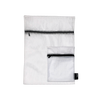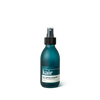How to wash your beach wear
Summer is here, along with the sun, sand and salt. Read on for our top tips on how to get your swimwear and towels clean and spotlessly sand-free after a day at the beach.
Step #1: Shake out the sand
Never throw sand-sprinkled towels straight into your washing machine - as sand is abrasive, it could damage the drum, as well as block the filter and pipes. Plus, once it’s found its way into your machine, it’s tough to remove. Instead, leave your towels to completely dry, and shake them vigorously outdoors to get rid of as much sand as possible before laundering. The same goes for any other kind of dirt or debris on your items.
Step #2: Let your swimwear dry
Let your soggy swimwear and towels completely dry when you get home. Tossing wet items into your laundry basket or onto a pile will allow odour-causing bacteria and mildew to flourish. Ideally, hang them somewhere outside to dry in the fresh air. Otherwise, launder them immediately, before they have the chance to stew in a smelly, damp pile.
Step #3: Speedy spot-treat
Be sure to pre-treat any stains before washing, especially if you’re not laundering straight away. Check out our handy picnic stain removal guide to learn how to remove common summer stains, like BBQ sauce and ice cream, as well as sweat stains and grass stains.
Step #4: Use a laundry bag
Wash small, lightweight items like bikinis, and swimwear with strings, in a mesh laundry bag (we recommend the small one from our Mesh Laundry Bag Bundle). It’s the best way to keep them together in the machine and prevent them from snagging or tearing.
Step #5: Hand or machine wash
Machine-wash swimwear and towels on a cool wash (> 30°C) and gentle delicates cycle, and use a gentle, non-abrasive formulation like Kair’s Activewear Wash to preserve the shape and elasticity. If you’re only washing a few select items, consider hand washing to save water and energy. Soak in cool water for about 30 minutes, then rinse away the salty seawater (which can damage stretchy fibres over time). Dissolve in the detergent, swish the items around, then gently squeeze out the water (avoid wringing).
Step #6: Skip the fabric conditioner
Keep your swimwear quick-drying, and your towels fluffy and absorbent, by skipping the fabric conditioner in the wash. Fabric softener coats fibres with a protective layer, both locking in moisture, and exposing fabrics to waxy residue. This prevents quick-drying items from drying, leading to a musty odour and mould growth. At the same time, it prevents absorbent fabrics from taking in moisture, reducing absorbency over time.
Step #7: Air dry
For super-fluffy beach towels, take them out of the drum straight after washing and give them a shake. Air dry, then give them a quick spin in the tumble dryer to agitate the fibres. Adding some dryer balls (like these wool ones from A Little Find, which are azo-free and lead-free) also helps, and can cut tumble drying time by 20-40%. Generally, though, avoid tumble drying at all costs, as it degrades fibres and wastes precious energy. Dry patterned and brightly-coloured swimwear out of direct sunlight to prevent fading, and either lay flat to dry, or hang on a washing line. Never hang by the straps, otherwise you’ll distort the shape. Peg bikini tops as you would a bra - by the fabric between the cups.
Step #8: Freshen up beach towels
Your beach towels probably won’t get that dirty, so there’s no need for a proper wash every time. Simply refresh them between uses with some scent-boosting finishing spray.
Cleaning up after a day at the beach will be so much easier with these tried-and-true laundry tips. So shake out the sand, and let the spin begin.


















